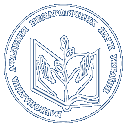- Луговий, В.І. (orcid.org/0000-0003-1650-066X), Калашнікова, С.А., Слюсаренко, О.М. and Таланова, Ж.В. (2013) Nobel laureates and top higher education institutions, countries and continents with leading university potential Вища освіта України, 4. pp. 10-20. ISSN 2078-1016
|
PDF
2013_Нобел_лаур_топ_універ_ВІЛ_САК_ОМС_ЖВТ.pdf Download (462kB) | Preview |
Abstract
The article explores the role of prominent higher education institutions, countries and continents with the powerful university potential in the formation of Nobel laureates as human development leaders. It was identified that in total 326 institutions from 51 countries on 6 continents have been involved in the formation (education, internship, employment) of 835 Nobel Prize winners in physics, chemistry, physiology or medicine, literature, peace, economic sciences. The shared and collective character of institutional participation via academic mobility in the formation and functioning of the laureates was determined. On the one hand, one institution typically participated in the formation of nearly 8 laureates (with variation range from 1 to 89 laureates); on other hand, the formation of each laureate, as a rule, was realized in several institutions. The dominant contribution in the formation of laureates is done by top-institutions in the TIMES and Shanghai Rankings that accordingly provide for 87,0 and 91,8 % of all cases. The most significant contribution (above 40 %) is assigned to institutions that occupied positions 1 to 30 in the above rankings. A strong correlation was revealed between ranking position of an institution in the above mentioned rankings and its productivity in the formation of laureates. The average age of such high-ranking institutions is over 200 years old. The major producers of laureates are institutions of USA, United Kingdom, Germany, France, Switzerland, the Netherlands, Russian Federation, Canada, Sweden, Japan, Austria, Australia and Italy that provide for 93,2 % of formation cases. Among the continents, the biggest contributors are institutions of the North America – 52,4 % and Europe – 42,7 %. The experience of organization, operation, development of leading universities network, countries and continents with high university potential can serve as an example for modernization of Ukraine’s higher education, as well as other countries, aiming at efficient formation of the national elite relevant to research-innovative type of social progress.
| Item Type: | Article |
|---|---|
| Keywords: | Nobel laureates, formation (education, internship, employment), top higher education institutions, leading university potential, countries, continents |
| Subjects: | Science and knowledge. Organization. Computer science. Information. Documentation. Librarianship. Institutions. Publications > 3 Social Sciences > 37 Education > 37.01/.09 Special auxiliary table for theory, principles, methods and organization of education Science and knowledge. Organization. Computer science. Information. Documentation. Librarianship. Institutions. Publications > 3 Social Sciences > 37 Education > 378 Higher education. Universities. Academic study |
| Divisions: | State institution of higher education «University of educational management» > Open Education Institute |
| Depositing User: | пров. бібліотекар В.О. Ворона |
| Date Deposited: | 26 Mar 2015 10:35 |
| Last Modified: | 25 Apr 2019 16:03 |
| URI: | https://lib.iitta.gov.ua/id/eprint/8681 |
Downloads
Downloads per month over past year
Actions (login required)
 |
View Item |




